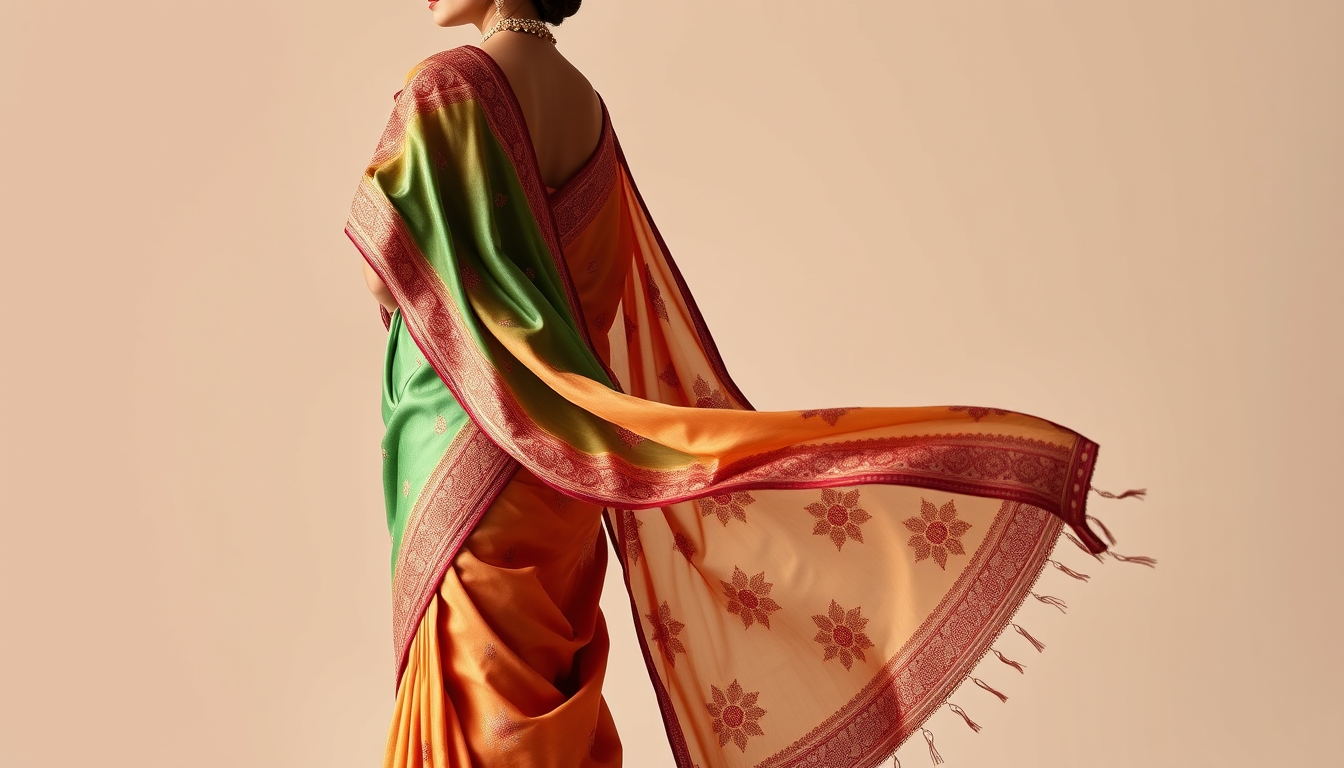Introduction to the Indian Sari
The Indian sari is a traditional garment that has been a symbol of Indian culture and heritage for centuries. It is a unisex garment, worn by women in various forms across the country. The sari is a versatile piece of clothing that can be worn for both formal and informal occasions. It is a significant part of Indian fashion and is often associated with festivals, weddings, and other special events.
The History and Evolution of the Indian Sari
The history of the Indian sari dates back to ancient times. The earliest forms of the sari were found in the Indus Valley Civilization, which existed around 3000 BCE. The sari has evolved over time, with different regions in India developing their unique styles and patterns.
In ancient times, the sari was a simple piece of cloth draped around the body. Over time, it evolved into a more complex garment with various styles and techniques. The Mughal Empire, which ruled India from the 16th to the 19th century, significantly influenced the sari’s design and style. The Mughals introduced intricate embroidery and weaving techniques, which became popular in the sari.
Types of Indian Sari
There are numerous types of Indian saris, each with its unique style, pattern, and color. Some of the most popular types of Indian saris include:
1. Kanjeevaram Sari
The Kanjeevaram sari is a traditional silk sari from the state of Tamil Nadu. It is known for its rich, vibrant colors and intricate gold or silver zari work. The Kanjeevaram sari is often worn during weddings and other formal events.
2. Banarasi Sari
The Banarasi sari is a silk sari from the city of Banaras (Varanasi) in Uttar Pradesh. It is known for its intricate gold or silver thread work and is often worn during weddings and festivals.
3. Mysore Sari
The Mysore sari is a silk sari from the city of Mysore in Karnataka. It is known for its unique design and color combinations. The Mysore sari is often worn during festivals and special occasions.
4. Maharashtrian Sari
The Maharashtrian sari is a traditional sari from the state of Maharashtra. It is known for its unique design and color combinations. The Maharashtrian sari is often worn during festivals and special occasions.
5. Bengali Sari
The Bengali sari is a traditional sari from the state of West Bengal. It is known for its unique design and color combinations. The Bengali sari is often worn during festivals and special occasions.
6. Odia Sari
The Odia sari is a traditional sari from the state of Odisha. It is known for its unique design and color combinations. The Odia sari is often worn during festivals and special occasions.
7. Madhubani Sari
The Madhubani sari is a traditional sari from the state of Bihar. It is known for its unique design and color combinations. The Madhubani sari is often worn during festivals and special occasions.
How to Wear an Indian Sari
Wearing an Indian sari can be a bit challenging for those who are not familiar with the process. However, with practice, it can become a comfortable and enjoyable experience. Here are some steps to help you wear an Indian sari:
1. Choose the Right Sari
The first step in wearing an Indian sari is to choose the right sari. Consider the occasion, your body type, and your personal style when selecting a sari.
2. Prepare the Sari
Before wearing the sari, you need to prepare it. Lay the sari out flat and smooth out any wrinkles. If the sari is pleated, make sure the pleats are even and neat.
3. Drape the Sari
To wear the sari, you will need to drape it around your body. Start by holding the sari at the top and wrapping it around your waist. Then, bring the loose end of the sari up and over your shoulder, and tuck it into the waistband.
4. Adjust the Sari
Once the sari is draped, you can adjust it to your liking. Make sure the sari is comfortable and not too tight or too loose. You can also adjust the pleats to create different looks.
5. Accessorize
Accessories can enhance the look of your sari. Consider wearing jewelry, a blouse, or a dupatta to complete your look.
The Significance of the Indian Sari
The Indian sari holds significant cultural and historical importance. It is a symbol of Indian heritage and identity. The sari is often associated with festivals, weddings, and other special events. It is also a symbol of Indian women’s strength, grace, and elegance.
The Indian sari has been a source of inspiration for many artists, designers, and fashion enthusiasts. It has been featured in various movies, TV shows, and fashion magazines. The sari has also been a subject of study for scholars and historians who are interested in understanding Indian culture and heritage.
The Future of the Indian Sari
The Indian sari has evolved over time and continues to do so. With the rise of globalization and the influence of Western fashion, the sari has been reinvented and adapted to suit modern tastes and trends.
Many designers and fashion houses have created modern interpretations of the sari, incorporating new materials, colors, and designs. The sari has also been adapted for different body types and occasions. Today, the sari is not just a traditional garment but also a symbol of Indian fashion and style.
Conclusion
The Indian sari is a versatile and beautiful garment that has been a part of Indian culture and heritage for centuries. It is a symbol of Indian women’s strength, grace, and elegance. The sari has evolved over time, with different regions in India developing their unique styles and patterns. Today, the sari is a popular choice for both traditional and modern occasions. Whether you are a fashion enthusiast or someone interested in Indian culture, the Indian sari is a fascinating and captivating garment that is worth exploring.
